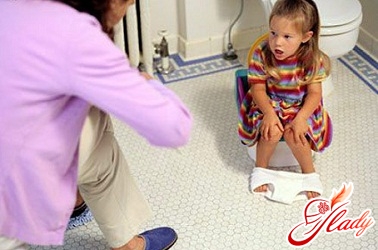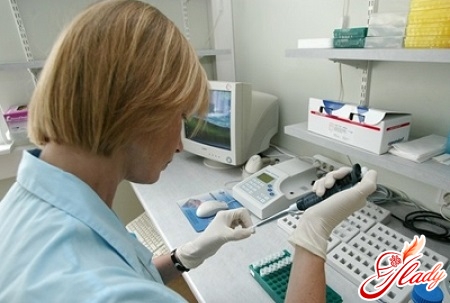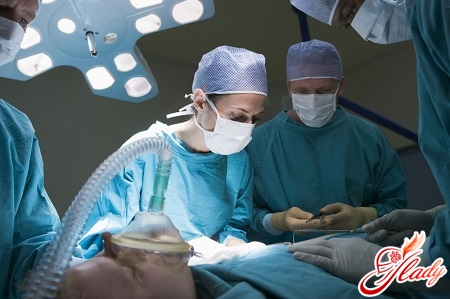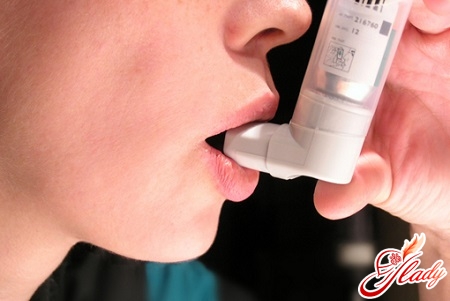 Cystitis is a very commondisease. Especially in women. According to dry medical statistics, every second person encounters this disease at least once in their life. Therefore, it is very important to know everything about cystitis: symptoms, causes of development, treatment. Having this information will help to notice the problem at the very beginning of its development. And therefore, to take all the necessary measures to treat this disease. And first, it is necessary to find out exactly what cystitis is. The bladder is a hollow pear-shaped muscular organ designed to collect and then remove urine from the body. Urine enters the bladder from the kidneys, through two ureters. Urine is excreted through the urethra. If the mucous membrane of the bladder becomes inflamed, the very notorious cystitis develops.
Cystitis is a very commondisease. Especially in women. According to dry medical statistics, every second person encounters this disease at least once in their life. Therefore, it is very important to know everything about cystitis: symptoms, causes of development, treatment. Having this information will help to notice the problem at the very beginning of its development. And therefore, to take all the necessary measures to treat this disease. And first, it is necessary to find out exactly what cystitis is. The bladder is a hollow pear-shaped muscular organ designed to collect and then remove urine from the body. Urine enters the bladder from the kidneys, through two ureters. Urine is excreted through the urethra. If the mucous membrane of the bladder becomes inflamed, the very notorious cystitis develops.
Symptoms of cystitis
The onset of the disease almost always occursin a very pronounced form. It is almost impossible not to notice the course of even a chronic form of cystitis - the symptoms are very disturbing to the sick person. The signs of such a disease as cystitis are quite uniform and occur in almost all cases. Typical symptoms of cystitis include:
- Increasing urination
With cystitis, the frequency of urination mayreach 30-40 times a day. Moreover, in addition to real urination, women also experience false urges. As a result, a sick person spends a significant part of the day in the toilet. There is no point in talking about any normal life during this period.
- Painful sensations
A person with cystitis has little frequenturination - it is also very painful. And at the end of the urination process, a strong burning sensation occurs. In addition, women typically experience pain in the bladder and lower back. Moreover, the pain can be very different - both pulling and dull, and sharp, spastic.
- Change in color and smell of urine
In acute attacks of cystitis most oftensignificant changes are observed in the urine - it becomes more turbid, sediment appears. The smell also changes - it becomes very pronounced and very unpleasant. At the height of the disease, an admixture of blood and pus may appear in the urine - in particularly severe cases.
- Increased body temperature
Often, in addition to all the symptoms described above,a person with cystitis has a fever. Moreover, it can rise to very significant numbers - up to 39-40 degrees. And it can be very difficult to bring it down - conventional antipyretic drugs have virtually no positive effect. Please note - all these symptoms are usually pronounced in adults. In children and the elderly, they can be very blurred, and sometimes completely absent. And the only indicator of the presence of the disease is general weakness, fever and frequent urination. In order to reliably diagnose the disease, you must consult a doctor - even if all the symptoms are clearly expressed. After all, it is necessary not only to establish a diagnosis, but also to identify the cause of its development. And signs of the disease alone will not allow this. Otherwise, it is very difficult to choose the right course of treatment that will help eliminate not only the symptoms of cystitis, but also the disease itself. To diagnose the disease, a sick person must first pass a general urine test and a urine test for bacterial examination. These tests will help determine the type of pathogen, as well as the degree of the inflammatory process. But in order to get the correct picture, it is necessary to correctly pass this urine test correctly. This is done in the following way. The penis or vagina and labia must be thoroughly washed with running water, always with soap. And remember - a woman should ALWAYS wash herself in the direction of the anus - otherwise, you can bring E. coli into the vagina. As a last resort, use special wet disinfectant wipes. The jar for analysis must be very carefully washed and scalded with boiling water. Do not touch the container from the inside under any circumstances - it must be very clean. Only the middle portion of urine is collected - the first and last portions are not suitable for analysis. The volume of urine required for analysis is at least 5 tablespoons. In addition to urine analysis, additional studies are most often prescribed to clarify the diagnosis. For example, a study of the bladder, which allows you to determine the degree of the inflammatory process, the presence of pathological changes in the walls of the bladder, stones and sand. In almost all cases, an ultrasound examination of the bladder and kidneys is performed.
Causes of development of cystitis
So, what is cystitis, how is itmanifests itself and is diagnosed, we have figured it out. Let's now find out about the causes of cystitis, which provoke the development of the disease. There are several such reasons and for successful treatment it is extremely important to accurately determine which factor served as the provoking factor.
- Pathogenic microflora
Most often, the main cause of the development of cystitisare bacteria that have entered the bladder through the urethra. In about half of all cases, this pathogen is the most common E. coli, which lives in the rectum of absolutely any person. But under unfavorable conditions - for example, with a weakened immune system - the entry of this very stick into the bladder can lead to the development of cystitis. Unfortunately, it is the female half of the population that very often suffers from this. However, in addition to E. coli, there are quite a lot of bacteria that provoke the development of cystitis. Therefore, a bacterial urine test should still be carried out. Please note - most often this type of cystitis is observed in girls, young women and women. This phenomenon is explained by the anatomical feature of the structure of the female genitourinary system - the urethra itself is much shorter than in men. And it is located in close proximity to the anus. This means that it is much easier for pathogenic microflora to penetrate into the bladder.
- Inflammatory process of the urethra
The second most common cause of developmentCystitis is an inflammatory process of the urethra itself. Most often, this occurs shortly after sexual intercourse, which results in friction of the external opening of the urethra. As a rule, symptoms of cystitis in such cases appear approximately 12 hours after sexual intercourse. However, irritation of the urethra can be provoked not only by sexual intercourse. There are a number of people who can have such a reaction to anything - intimate hygiene gel, toilet soap, even colored toilet paper. Carefully monitor the reaction of your body - you will surely be able to quickly identify the culprit of the irritation.
- Anatomical pathologies
In some cases, cystitis can be caused byanatomical pathology of the structure of the genitourinary system - if urine from the bladder gets back into the ureters. This pathology is very quickly detected during the most common ultrasound examination of the kidneys and bladder. Such people should be under constant strict supervision of a urologist.
- Stagnation of urine
In some cases, the cause of cystitisbecomes a banal stagnation of urine - or rather, its poor outflow. This phenomenon is most often observed in elderly people, as well as bedridden patients who cannot move independently. In addition, this can occur in cases where there is a tumor in the bladder cavity. And constantly restrained urges to urinate can lead to the same sad consequences. Of course, these are far from all the causes of cystitis, but most of them. In each specific case, the provoking factor can only be identified by the attending physician, having familiarized himself with the test results and external manifestations.
Prevention of cystitis
If you fall into a risk group,you need to take care of strict adherence to preventive measures. They will help to reduce the risk of developing the disease several times. We will tell you only about the general rules, and more specific information, taking into account your particular body characteristics, will be given to you by your attending physician.
- Timely emptying of the bladder
Try to empty your bladder like thisoften, as your body requires. In the case of bedridden patients, relatives should learn to use urinary catheters. Remember, we have already talked about the fact that it is the untimely emptying of the bladder that can provoke the development of cystitis.
- Fluid consumption
For normal functioning of the bladderAn adult needs to drink at least one and a half liters per day. Moreover, this volume is indicated without taking into account liquid dishes, fruits and vegetables. It is preferable to drink pure water without gas, dried fruit compotes and fruit drinks.
- Compliance with hygiene rules
Be sure to strictly adhere to the rules of personalhygiene. Take a shower at least once a day, and it is advisable to wash yourself after each visit to the toilet. Do not forget to change your underwear in a timely manner. And during the treatment, the underwear must be changed even more often - about 10 times a day.
- Do not forget about sexual intercourse
Immediately after it, don't just wash it, butBe sure to empty your bladder. This will flush out any bacteria that may have entered the urethra. All these measures will help prevent bacteria from entering the urethra and, accordingly, the bladder.
- The right selection of clothes
Try to give it up completely and entirelyany synthetic underwear. It does not allow air to pass through and creates a very favorable environment for the reproduction of pathogenic microflora. Believe me - cotton underwear looks no worse, and it is definitely healthier. And in the summer, you should give up tight trousers - for the same reasons, to avoid the emergence of an unfavorable environment. This is especially true for women.
Treatment of cystitis
Self-treatment of cystitis in women canlead to the most tragic consequences. Therefore, seek medical help at the first opportunity - only a doctor will prescribe the treatment that will be truly effective. And before the doctor arrives, you can try to alleviate the patient's condition. To do this, follow a few simple rules that will help avoid various complications:
- Drink as much liquid as possible
At the first symptoms of cystitis in womenyou need to start drinking as much as possible - preferably clean drinking water. Or cranberry or lingonberry juice. A large amount of liquid helps flush the infection out of the bladder. And the treatment will be much more effective.
- Therapeutic diet
Completely exclude from your diet during treatmentany products containing calcium - milk, fermented milk products, cheese and cottage cheese - should be included in the diet of a sick person. Calcium worsens the course of the disease, complicates treatment and increases the risk of various complications.
- Warming up
If cystitis in women is accompanied by painsensations, you can try to alleviate the patient's condition with the most common warming. Apply a plastic bottle filled with warm water to the place that hurts the most - to the back or lower abdomen. The duration of warming can be as long as necessary - there is no harm to health. However, warming cannot replace treatment - it is only a temporary measure.
- Soda solution
To relieve severe burning sensationurination in women, doctors recommend drinking half a cup of warm water with half a teaspoon of baking soda dissolved in it every hour in the first hours after the onset of the disease. The effect is achieved by reducing the acidity of the urine. However, remember that such treatment can negatively affect the condition of the stomach.
First aid for complications of cystitis
Cystitis in women is extremely dangerous due to the risk of the most severe complications. Therefore, call an ambulance immediately if you experience symptoms such as:
- Severe headache or dizziness
- Temperature above 40 degrees
- The appearance of blood in the urine or genitals
- Signs of cystitis appeared in pregnant women
Cystitis should not be treated lightly, as a common cold. The consequences for the body can be very negative. Therefore, start treatment in a timely manner! We recommend reading:









